Experience Profile sales executive scenario
A sales executive uses the xFile to find out how engaged a named contact is with the car dealership website.
The Experience Profile dashboard provides an overview of the levels of engagement and commitment shown by a contact, which in turn can help sales executives to understand the characteristics, browsing behavior, and buying preferences of a contact.
In this example scenario, you want to get to know a named contact and find out how engaged he is with your car dealership website. To see the session trail for all interactions and activity, you can view triggered goals and events, campaigns that have been enrolled for, triggered engagement plans, and keywords used.
In this scenario, you complete the following tasks:
You can find a contact by entering a name or an email address in the search box provided in the Experience Profile.
To open the Experience Profile and find a named contact:
In a web browser, enter the URL of your Sitecore website.
Enter your log in credentials and click Log in.
To find contacts, click Experience Profile. By default, a list of the latest visitors to your website is displayed.
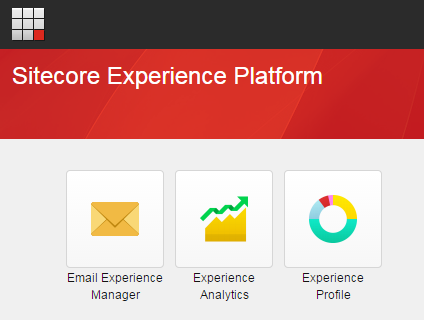
You can select a contact directly from the list or alternatively use the search box to find a known contact by name or email address.
For example, enter the name Andrew Baker, his email address, or part of the name in the Find contacts search box to find out more about the experience this contact has had with your website. Alternatively, click his name if you can already see it displayed in the list of contacts.
Look for the relevant contact in the search results and then click Contact Card to display the xFile for this contact.
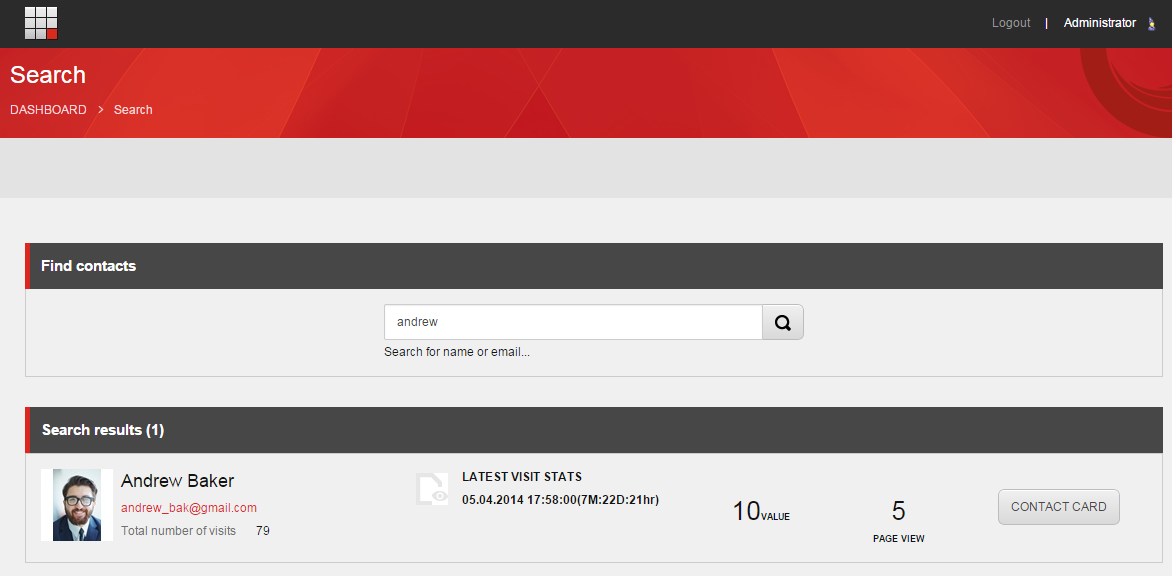
In this example, the Experience Profile for Andrew Baker is displayed. By default, the Overview tab is displayed first.
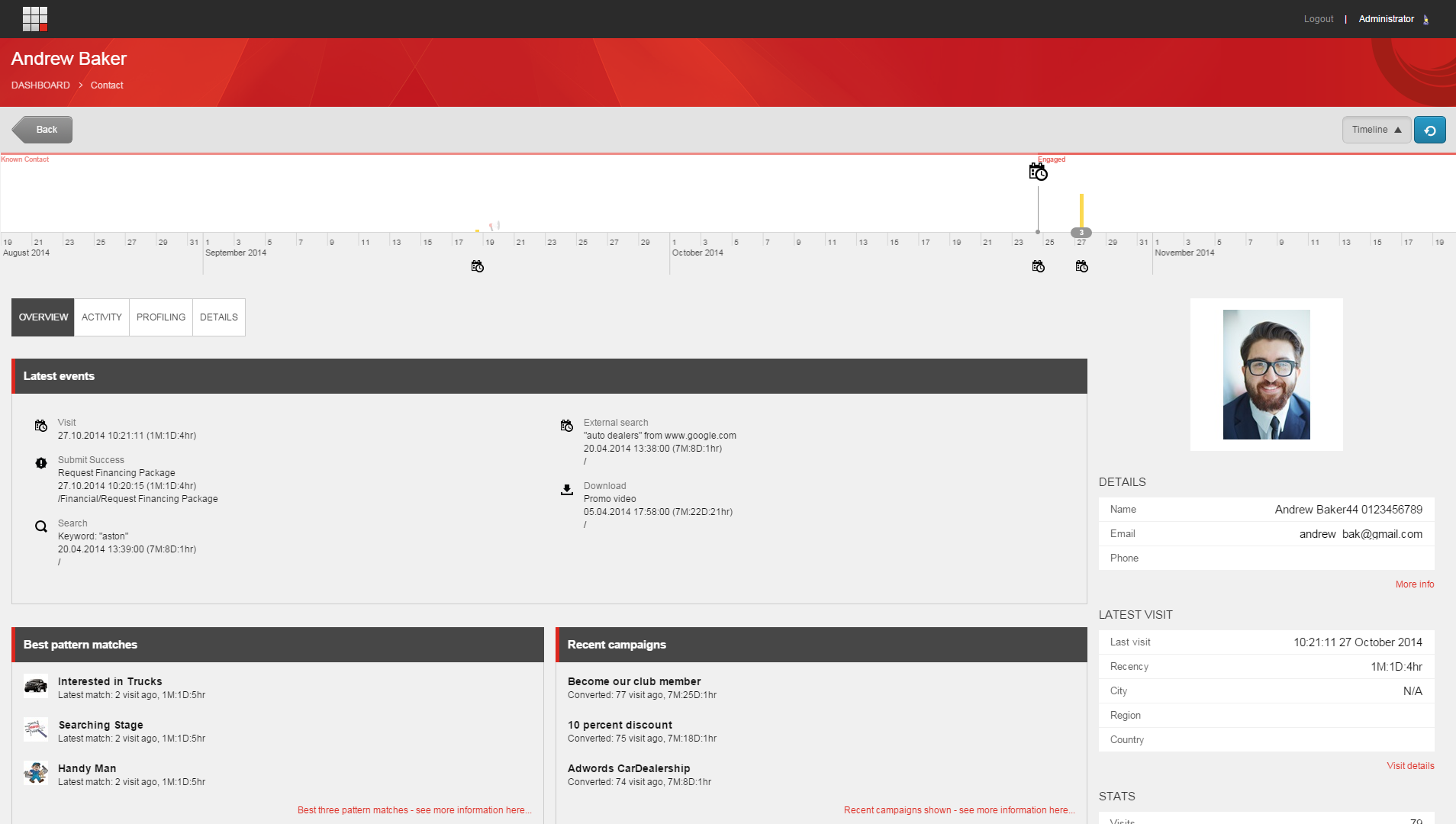
The Experience Profile dashboard provides a quick summary of the key interaction data for each contact that has visited your website. This data could include visits, pages viewed, enrolled campaigns, engagement value points generated, engagement plans, and social media information.
The Experience Profile can help you gauge the level of interest a contact has shown in your website. You can target promising sales leads and follow up initial interest with a telephone call or meeting. It is important to know whether a contact is merely browsing pages on a website without any intention of buying or if they are showing more signs of commitment, for example, by completing a campaign registration form or by downloading a price list or brochure. The Experience Profile provides this valuable information. It also might be possible to determine from the Experience Profile whether the contact is a premium customer interested in top-of-the-range products.
The following selection of tabs and subtabs in the Experience Profile dashboard demonstrates how you can analyze the level of engagement of a specific contact.
Overview tab
On the Overview tab, you can get a quick overview of the activity and experience of a contact or visitor to your website:
Latest events – displays a selection of events that the contact has recently triggered on your website.
For example, for the contact Andrew Baker, you can see his last recorded visit, that he has downloaded a promotional video, and that he has used the search keywords aston and auto dealers.
Best pattern matches – presents an instant snapshot of the preferences and interests of the contact based on profile values and pattern matches collected during a visit. Each pattern card contains a predefined set of profile values so that as a contact browses the website they can be matched to different pattern cards, depending on the content they have viewed.
In this example, you can see which type of car the contact is interested in and how close they are to making a purchase. The see more information link enables you to go directly to the Profiling tab to view more detailed information.
Recent campaigns – displays the most recent campaigns that the contact has signed up for. To go directly to the Campaigns tab and see at a glance the level of commitment and engagement a contact has with your brand, click see more information here.
 |
To the right of the Overview tab, you can see the name and email address of the contact. To see more detailed information about the contact on the Details tab, such as the location of the contact's home address, click More info.
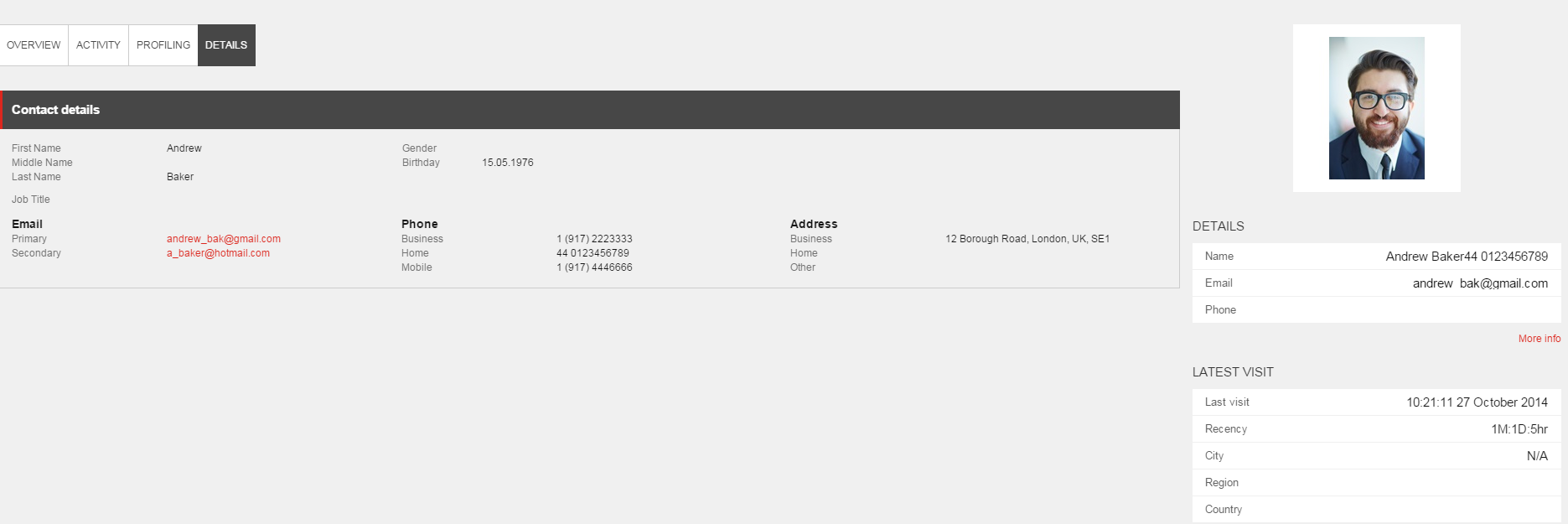 |
Goals subtab
On the Activity tab, on the Goals subtab, you can view a list of goals converted along with other metrics, such as total conversions, recency, and engagement value collected across all visits. You can use this information to learn a lot about the intentions of the contact, based on which goals have been converted, particularly if the accumulated engagement value is high across a small number of visits.
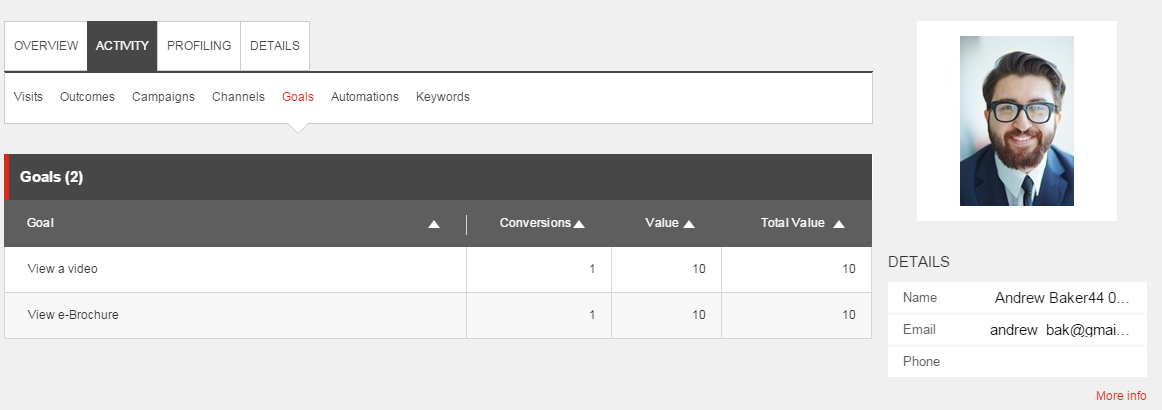 |
In this example, you can see that some of the goals that Andrew Baker has converted include viewing an e-brochure and viewing a video. He has accumulated 20 engagement value points (total value) during his visits to the car dealership website.
Andrew Baker has downloaded several resources over a small number of visits, which indicates he is interested in buying a car. He could be put into another state of an engagement plan as a result of triggering these goals or, alternatively, a sales representative might offer to call or email him to help him to make a decision.
Outcomes subtab
On the Activity tab, on the Outcomes subtab, you can see a list of any interactions that have had a significant monetary or non-monetary outcome.
These can indicate whether you should take any further action, such as creating personalization or adding a contact to or changing an engagement plan.
The Lead Management Funnel is the default outcomes funnel and contains several stages.
In this example, you can see that Andrew Baker has achieved several different outcome definition levels, moving from Unknown contact in April to Contract signed in May to Engaged in October.
 |
Profiling tab
On the Profiling tab, you can see a set of profiles that reflect the current interest the contact has in the content on the website. This is dynamic profile information that changes and is adapted with each page the visitor views or each action the visitor takes on the website.
In this example, Andrew Baker has been identified as being interested in trucks.
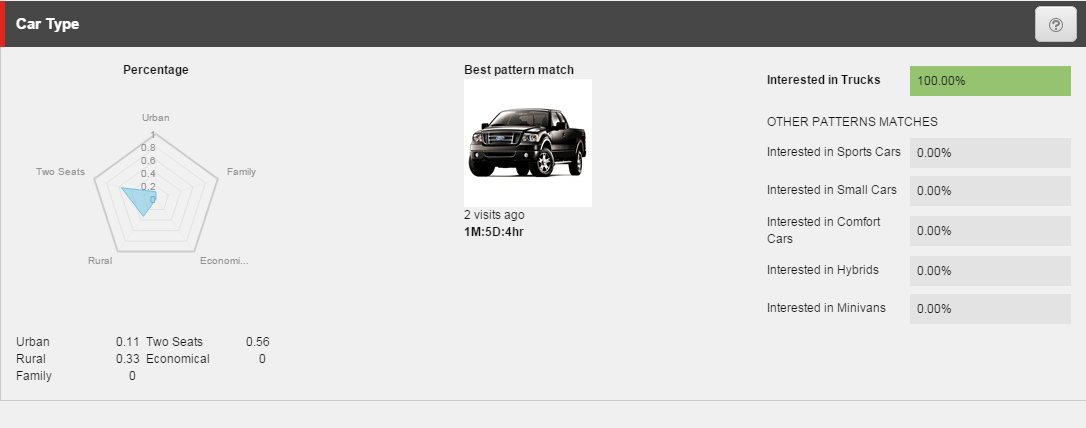 |
He has also been identified as matching the Handy man persona.
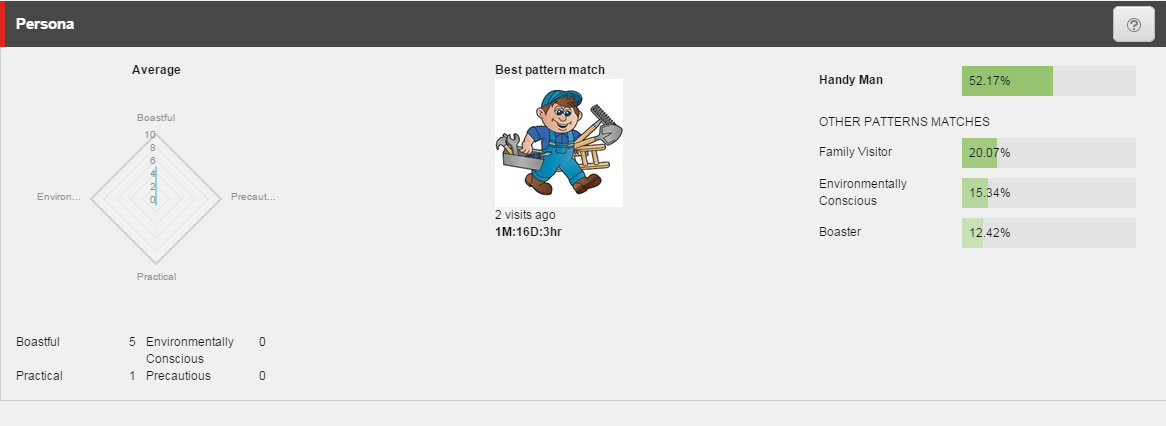 |
On the Overview tab, you can see that he used the search term aston, which suggests he has an interest in luxury cars and is in the searching stage of the buying cycle.
Profile information changes and adapts each time the contact makes a visit, so that pattern matches are dynamic and therefore constantly change. They reflect the content that the contact has viewed at that moment in time.
In the Experience Profile, the timeline enables you to view a contact's activity with your brand in chronological order. You can see the first point of interaction as an anonymous contact and you can see when a visitor provided a name or an email address and became a named contact. At a glance, the timeline gives you a visual overview of all the activity that a contact has had with your brand. You can use the timeline to assess whether a contact's activity on your website is declining and evaluate whether it is time to get in touch to remind the contact of your brand.
For example, on the timeline for Andrew Baker, you can see when he first became a contact and his recent activity. His first activity as an unknown contact was viewing an e-brochure that was part of a campaign, which generated 10 engagement value points.
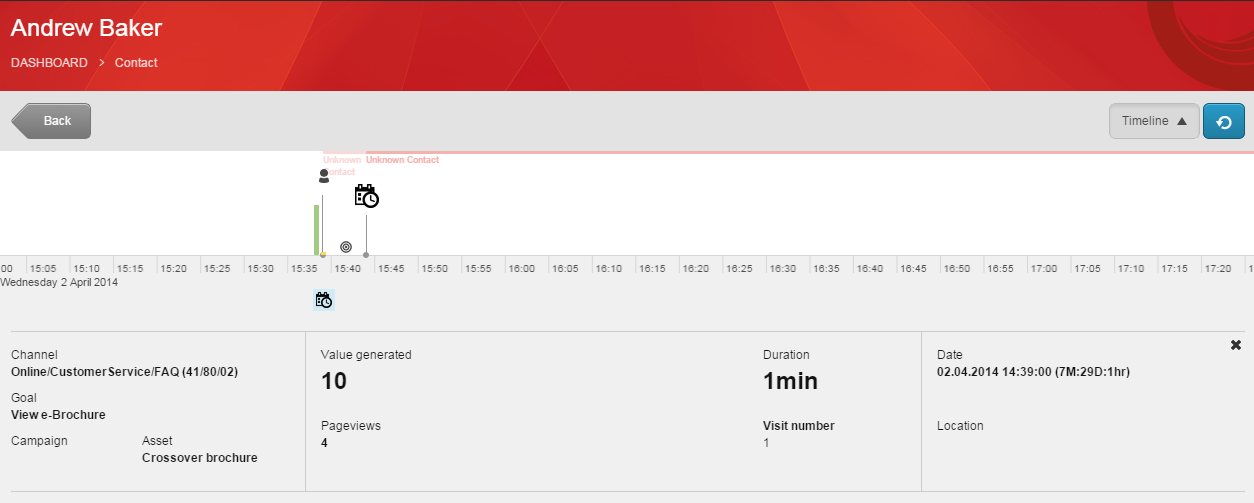 |
In this example, the timeline shows that Andrew Baker has engaged with the car dealership via a series of interactions over several months and has gone from being an unknown contact to being an identified contact and to being engaged.
 |
His last two interactions show that he has requested finance, indicating that he is coming close to buying a product from you.
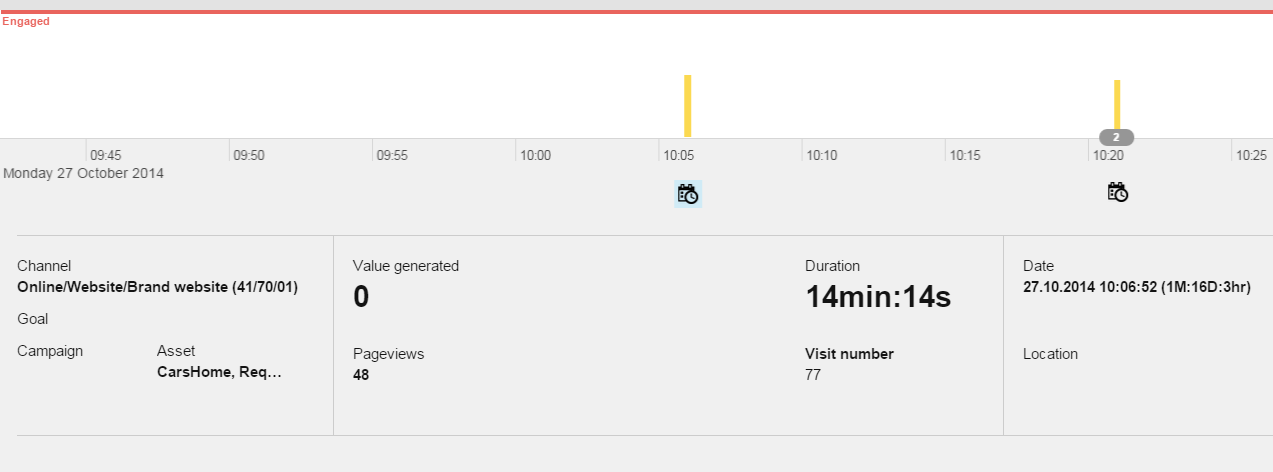 |
However, since the 27th October he has not shown any activity at all.
Conclusion
In this scenario, Andrew Baker has visited the car dealership website several times, downloaded content, converted multiple goals, and signed up for several campaigns. Each time his visits have shown an increasing level of commitment. His profile information shows that he is interested in trucks, matches the Handy man persona and is likely to be a premium customer. His activity on the website remained high for several months but has declined recently.
The Experience Profile can help sales or marketing executives to decide what action to take next. In this example, the contact, Andrew Baker, may respond well to a personal telephone call from a sales consultant to discuss in more detail which model of car would suit him best. A sales or marketing employee might also decide to improve the Experience Marketing strategy by asking a developer to amend or create a new engagement plan that is more suitable.